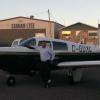BlackStone lab oil result
-
Members Online
- toto
- Will.iam
- Rick Junkin
- Tmack201
- Grant_Waite
- McMooney
- Aerodon
- laytonl
- badcummins99
- blaine beaven
- mmcdaniel33
- Gone
- hais
- richardbrochu27
- qwerty1
- TCC
- N201MKTurbo
- 201er
- takair
- Todd1
- Rocket_Driver
- varlajo
- aviatoreb
- Flash
- phxcobraz
- Lois
- CL605
- Bryan G
- KSMooniac
- pyco85
- tigers2007
- MB65E
- jetdriven
- PeteMc
- Joshua Blackh4t
- MikeL
- Schllc
- FJC


Recommended Posts
Join the conversation
You can post now and register later. If you have an account, sign in now to post with your account.